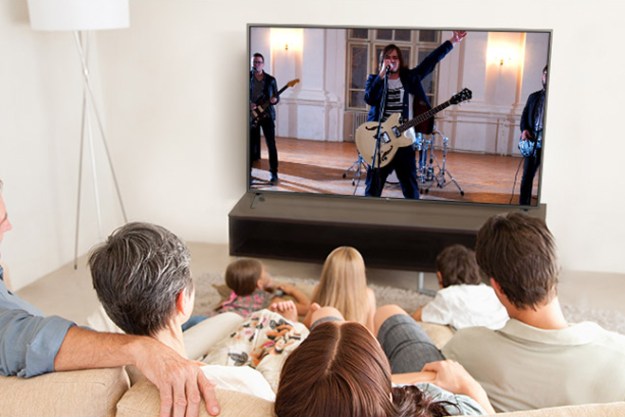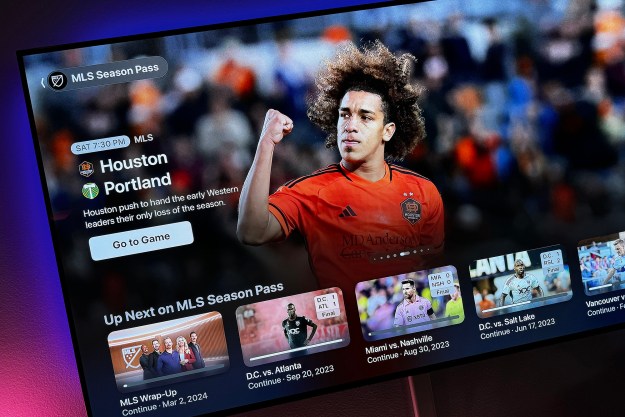No great surprise here, but Locast — which took over-the-air broadcasts from the major network channels in about three dozen major markets in the United States — is no more. After a couple years in existence, the networks banded together and filed suit. And on Sept. 1, 2021, a federal judge granted summary judgement that led to Locast ending operations just one day later.
We’ll leave the rest of this post as is, for the sake of posterity.
Let’s say you want to watch local TV channels in your area, but you get crummy reception on your HDTV antenna. Unfortunately for you, there goes your only free option. You now have a choice: Pay a cable or satellite company a monthly fee for that content, or pay one of the big live TV streaming services like YouTube TV, Hulu + Live TV, or AT&T TV Now. Either way, to watch those broadcasts that you would have gotten for free (if only your antenna reception were better), you now need to pay. Or do you?
If you happen to live in one of the 34 markets in which Locast operates, you can watch your local TV broadcasters for free over the internet, no antenna or subscription required. But what is Locast? What does it do (and how is it allowed to do it)? Why are ABC, NBC, CBS, and Fox gunning for it in the courts — and what’s this about AT&T being involved somehow? Fear not: We’ll tell you everything you need to know about Locast and whether or not it’s worth checking out.
What is Locast?
Locast is a nonprofit organization created in 2018 that redistributes terrestrial over-the-air TV broadcasts online. The service is free, though the group’s website is set up to take donations. At the moment, Locast only operates in the U.S. and only in 31 select cities, though that list has grown considerably since launch. Locast is operated by Sports Fans Coalition NY, and its founder is David Goodfriend, a lawyer and former executive at satellite TV provider Dish Network.
How does Locast work?

Watching livestreaming TV using Locast is easy. You can use the organization’s website, which has a built-in web-based viewer, or you can download and install one of the free Locast apps available for iOS, tvOS, Android, Android TV, Amazon Fire TV, TiVo, or Roku. To begin streaming on any of these platforms, all you’ll need to do is create a free Locast account.
When you sign in to the service, it will show you a TV guide display with the over-the-air channels available in your specific market. Clicking or tapping on any currently airing show will give you a brief description and the option to start watching. There’s no DVR capability for recording and no on-demand shows — just live TV.
Can I watch any TV station?

No. Because Locast is intended as a way for people to receive their local, over-the-air broadcasts without the use of an antenna or a cable/satellite subscription, you can only watch the channels you’d normally be able to access through these traditional means. Although, in theory, these geofenced broadcast limitations could be overcome using a VPN, Locast is not designed to give viewers access to non-local stations.
Isn’t this just like Aereo?

Aereo was a live TV streaming service that was founded in 2012 and provided a very similar platform: You could sign up for a relatively modest monthly subscription and get internet-based streaming access to local over-the-air broadcasts. Though the technology used to run Aereo is different from Locast, the result is essentially the same.
The biggest difference (which may save the company in the courts) is that Locast does not charge viewers to access these redistributed broadcasts. The biggest similarity is that Aereo didn’t pay the broadcasters that they redistributed a carriage fee and neither does Locast. Carriage fees are the revenue that broadcasters like CBS, ABC, NBC, and Fox usually make from having their content distributed by cable, satellite, and live TV streaming services like YouTube TV and AT&T TV Now (formerly DirecTV Now). The Big Four took Aereo to court, and the Supreme Court ultimately ruled against Aereo, a loss that led to its downfall.
Will Locast be able to avoid Aereo’s fate?
ABC, NBC, CBS, and Fox view Locast’s service the same way they viewed Aereo’s. In July 2019, they began the same legal strategy by suing Locast. Though they acknowledge that U.S. law makes provisions for nonprofits to redistribute broadcast signals, they don’t think Locast’s model is what these provisions had in mind when they were created to help those living in rural or urban areas receive local broadcast signals. In essence, the Big Four see Locast as a commercial entity, even though Locast has positioned itself as a nonprofit.
If Locast can effectively usurp the carriage fee model by providing viewers with a free and easy way to watch their local stations without a cable or satellite subscription, or even so much as an antenna, the big broadcasters stand to lose billions.
Locast’s response to the broadcasters’ suit is a countersuit that it launched in September 2019. The countersuit not only denies any wrongdoing, but it also argues that “the big broadcasters have ‘colluded’ as part of an effort to undermine and shut down Locast by ‘threatening business retaliation’ against any potential partners,” according to The New York Times. The Big Four have asked that Locast’s antitrust claims be dismissed, but so far, there have been no hearings in any of the legal actions.
Locast’s defense
Needless to say, fighting a court battle with opponents that have billions at stake (and billions to spend) won’t be cheap. In December 2019, Locast launched a GoFundMe campaign to get some help with its legal expenses. Apparently, very few people were inclined to come to Locast’s aid — the campaign only raised $14,551 of its $500,000 goal before it ended.
However, good news arrived in March 2020, when the Electronic Frontier Foundation (EFF) agreed to bolster Locast’s defense team, which has effectively reduced Locast’s legal costs to zero. “Broadcast TV is a vital source of local news and cultural programming for millions of people,” Mitch Stoltz, EFF senior staff attorney, told TVTechnology.com, “which matters now more than ever because of COVID-19.”
Locast’s defense is to position itself as a public service in keeping with the law’s allowances for limited types of redistribution. Or, as the organization’s website puts it, “instead of an over-the-air signal transmitter, we provide the local broadcast signal via online streaming,”
How and why is AT&T involved?

The other thing that caught the Big Four’s attention was AT&T’s support for Locast. In May 2019, AT&T added the free Locast app to its DirecTV and U-verse receivers. In June 2019, the company announced a $500,000 donation to the organization. These moves came at the same time that AT&T was locked in a heated contract negotiation with CBS over carriage fees.
In the past, failed talks have led to blackouts, or the temporary removal of channels from cable and satellite services, leaving some viewers without any way to watch them. AT&T’s backing of a service that would give its customers access to local broadcasters without costing AT&T any carriage fees was apparently the last straw for the Big Four, and the lawsuit against Locast was filed.
For what it’s worth, Locast claims that AT&T’s financial support is small when compared to the value of the donations it receives from individuals … but it doesn’t hurt to have friends with deep pockets.
Will Locast survive?
It’s too early to tell. The courts are letting it continue operations pending the outcome of the lawsuits, which are still making their way through the system, but cable networks have a long history of winning these sorts of suits.
Despite its looming legal jeopardy, however, Locast isn’t slowing down. At last count, the service registered a user base of 2.3 million, up from 1 million as of February 2020, according to MediaPost. With its current 31-city footprint, it has the ability to serve 168 million people or 51.7% of the U.S. market. In November 2020, Goodfriend said it had attracted enough paid donors for Locast to achieve “operational sustainability.”
During the run-up to the 2020 presidential election, the organization was able to make the claim that it helped American voters access their local broadcasters, providing a valuable and needed service. In fact, it began operations in Sioux City, Iowa in February 2020, just days before that state held its Democratic party caucus.
It’s hard to say how the courts will handle this case. Locast and Goodfriend firmly believe that the organization’s status as a nonprofit affords it protection from the copyright infringement charges that ultimately brought down Aereo. “We really did our homework,” Goodfriend told The New York Times. “We are operating under parameters that are designed to be compliant within the law.”
Goodfriend is also convinced that cable and satellite players’ days are numbered. “People are cutting the cord,” he told Madison.com. “The number of people subscribing to cable and satellite is going down, and it’s going down at an accelerating rate. It’s over. It’s only a question of when is it over.”
Digital Trends has noticed the same trend. and if the company survives the legal onslaught, it could be a cord-cutter’s best friend for years to come.
Editors' Recommendations
- Tubi teams with DAZN for sports as free TV service continues its takeover
- ESPN+ Free Trial: Can you sign up for free in 2024?
- What is Tidal? The hi-fi streaming music service fully explained
- What is DirecTV Stream: plans, pricing, channels, and more
- Discovery Plus free trial: Stream for a week for free




